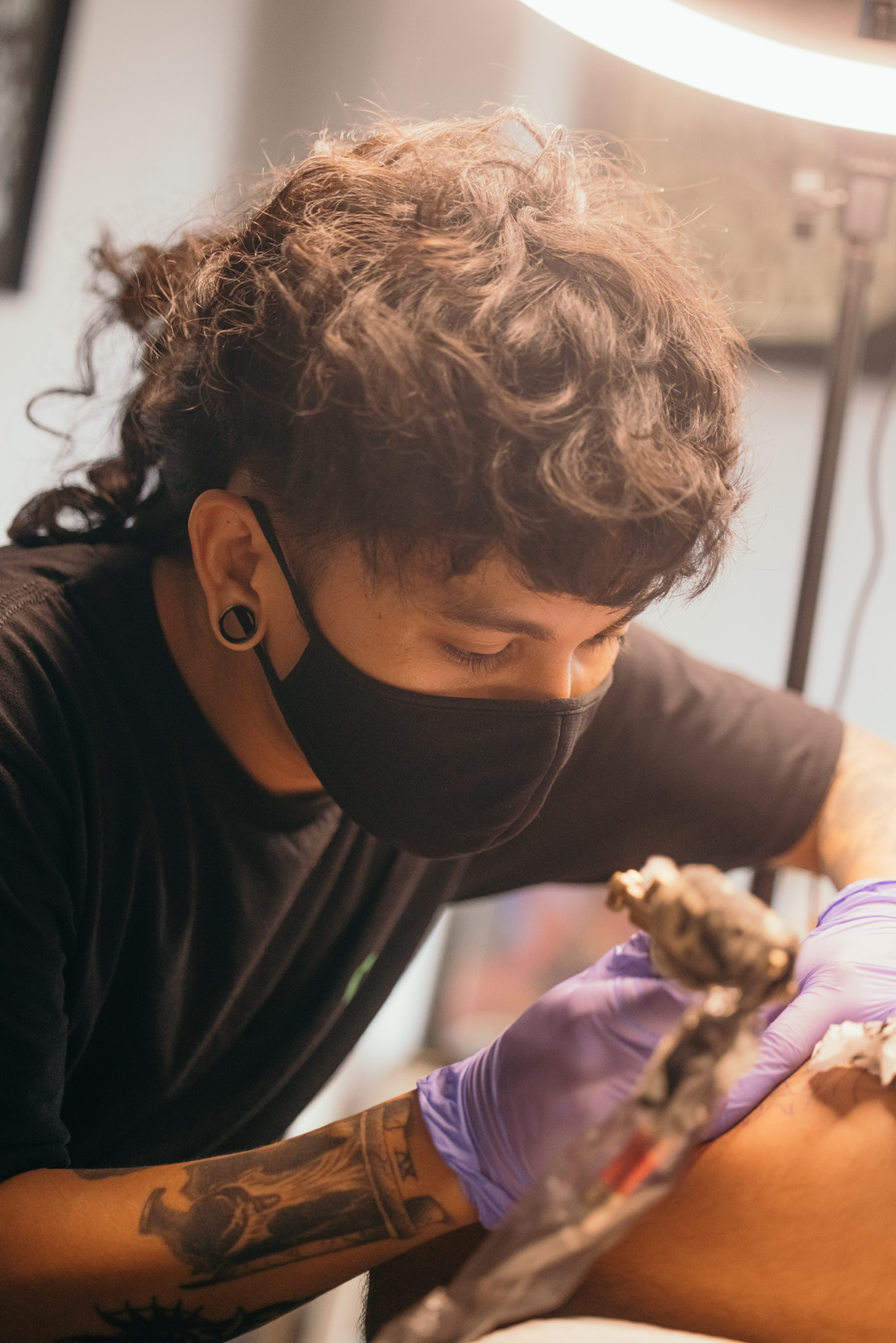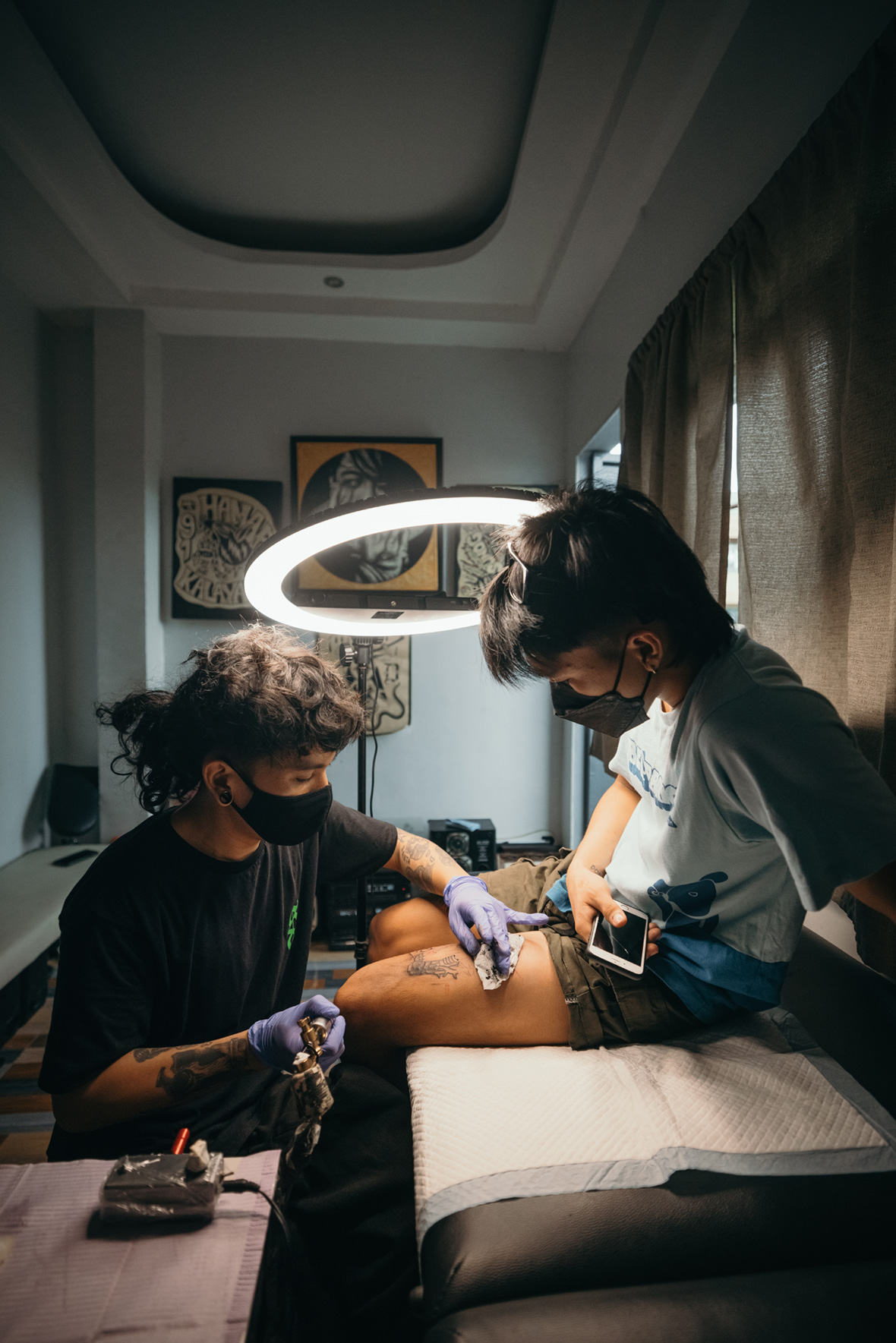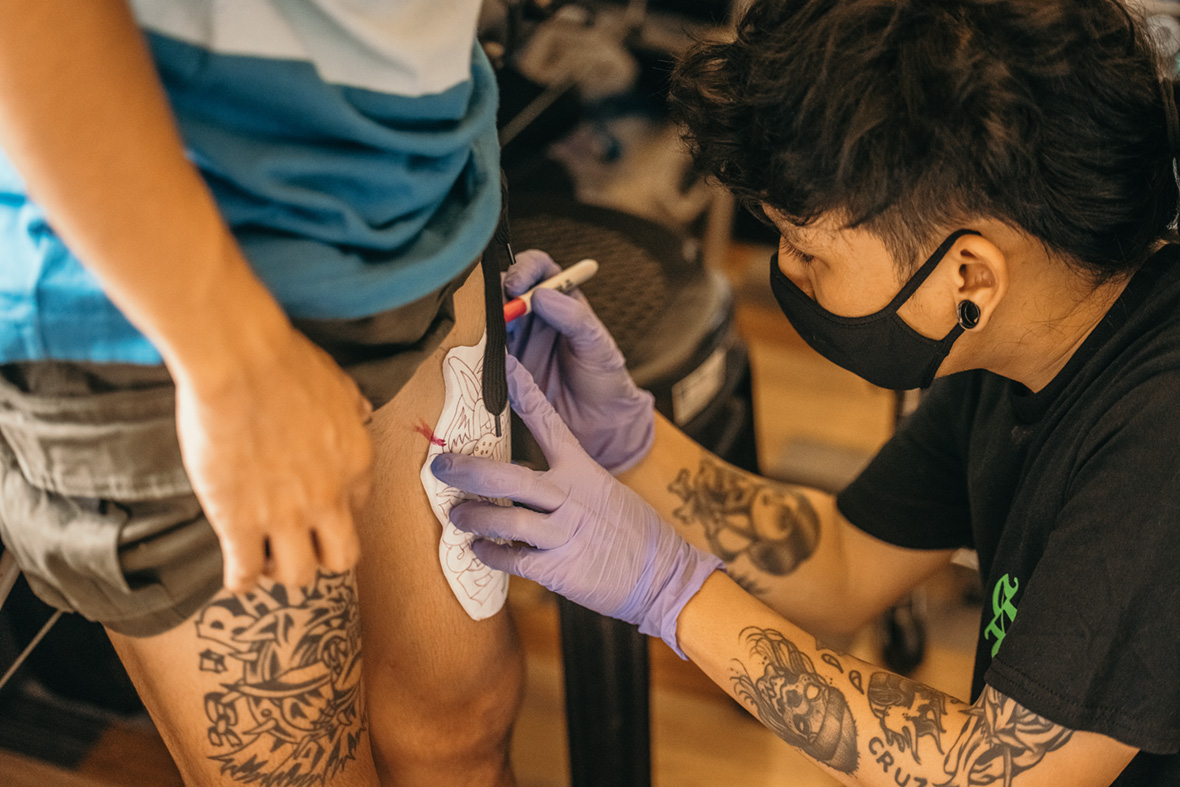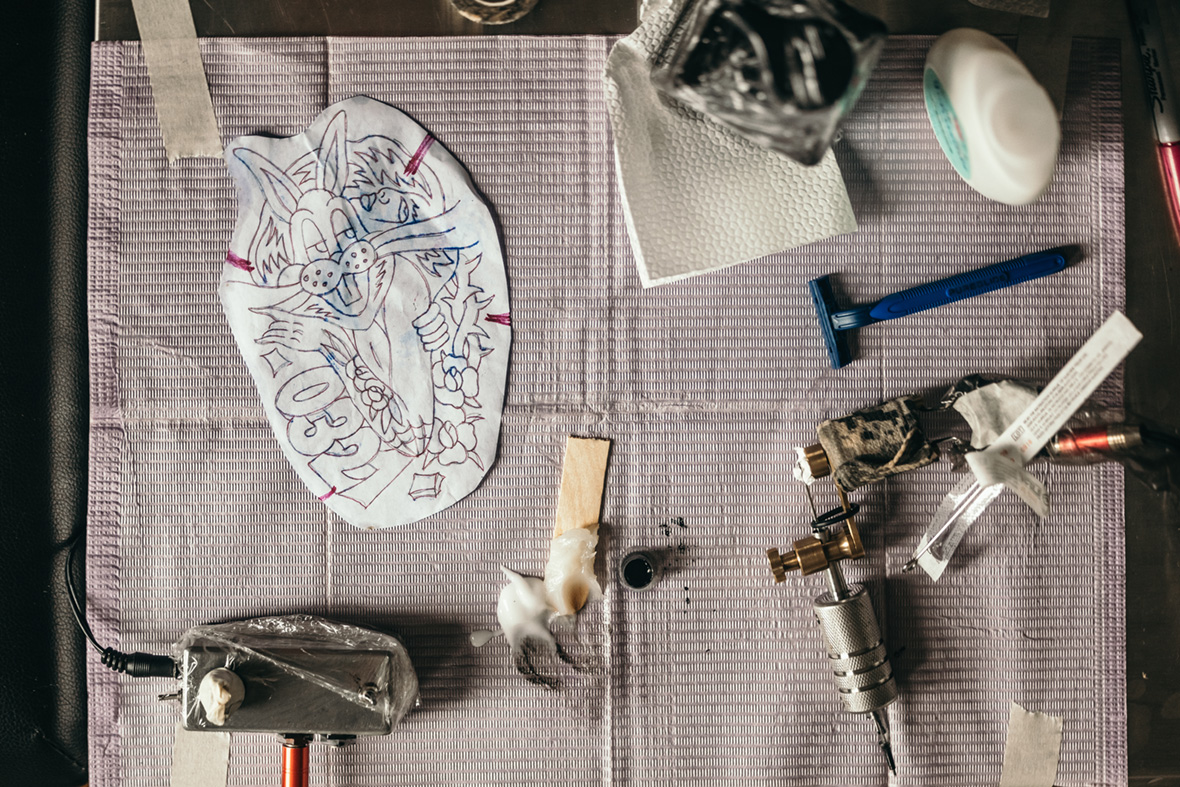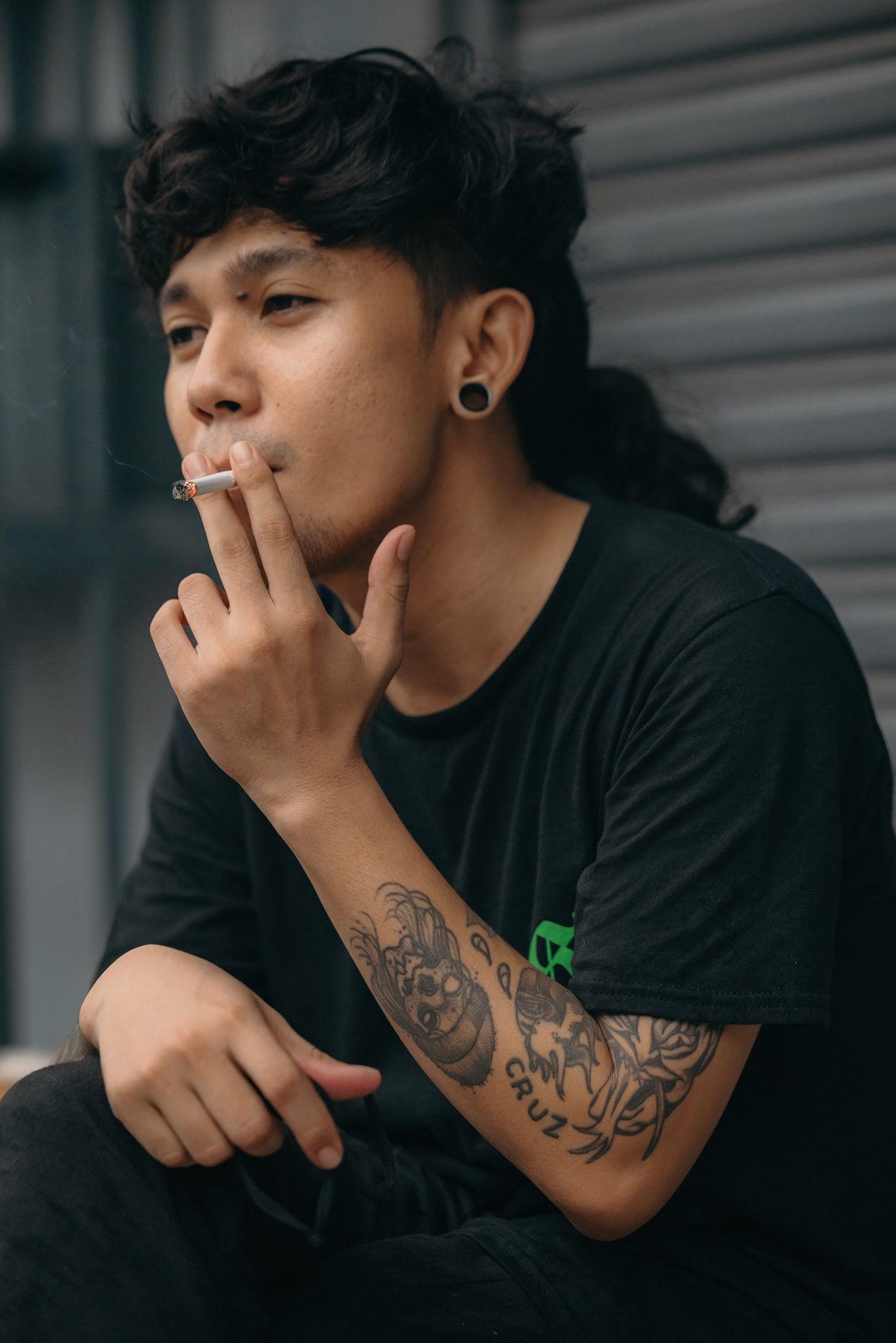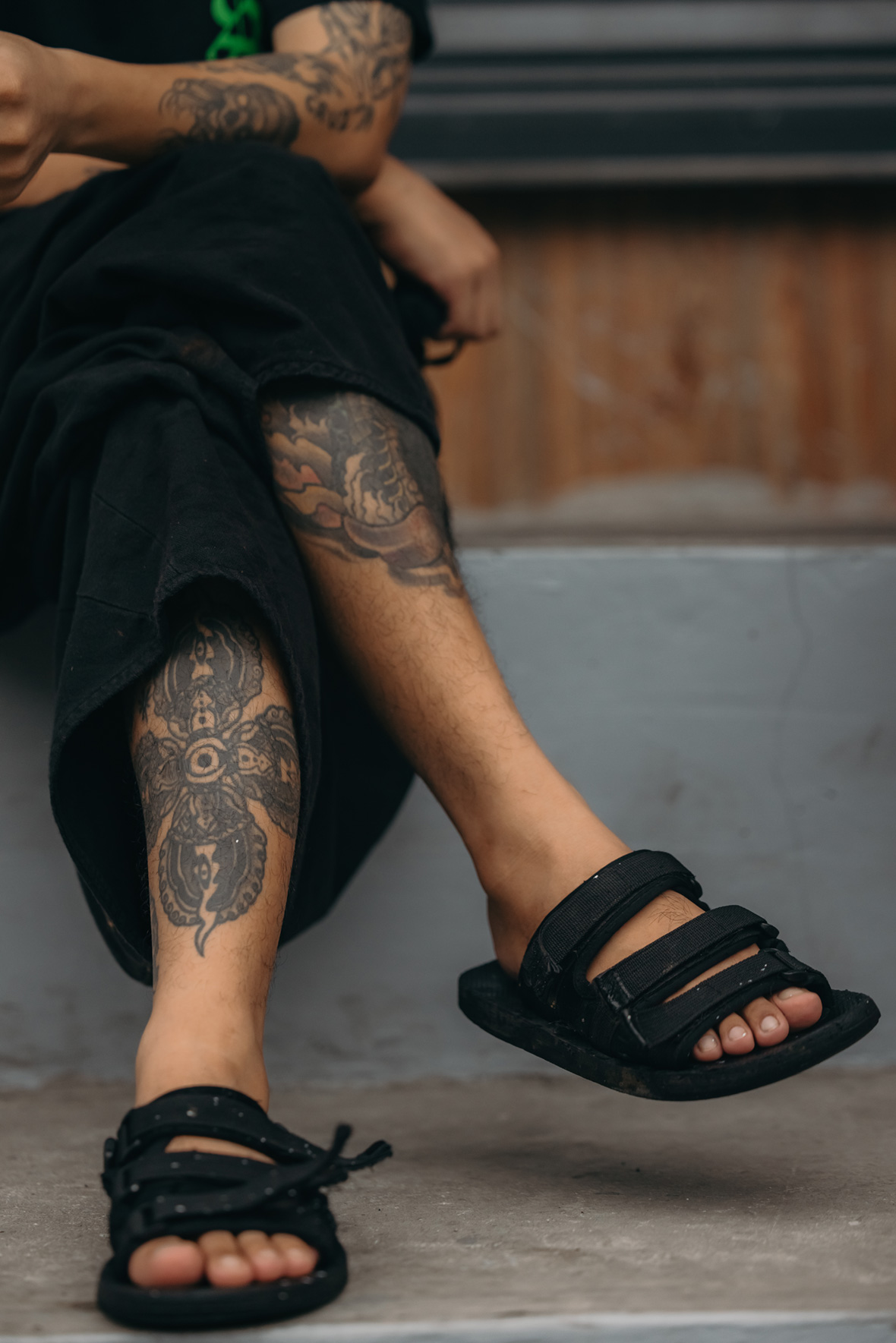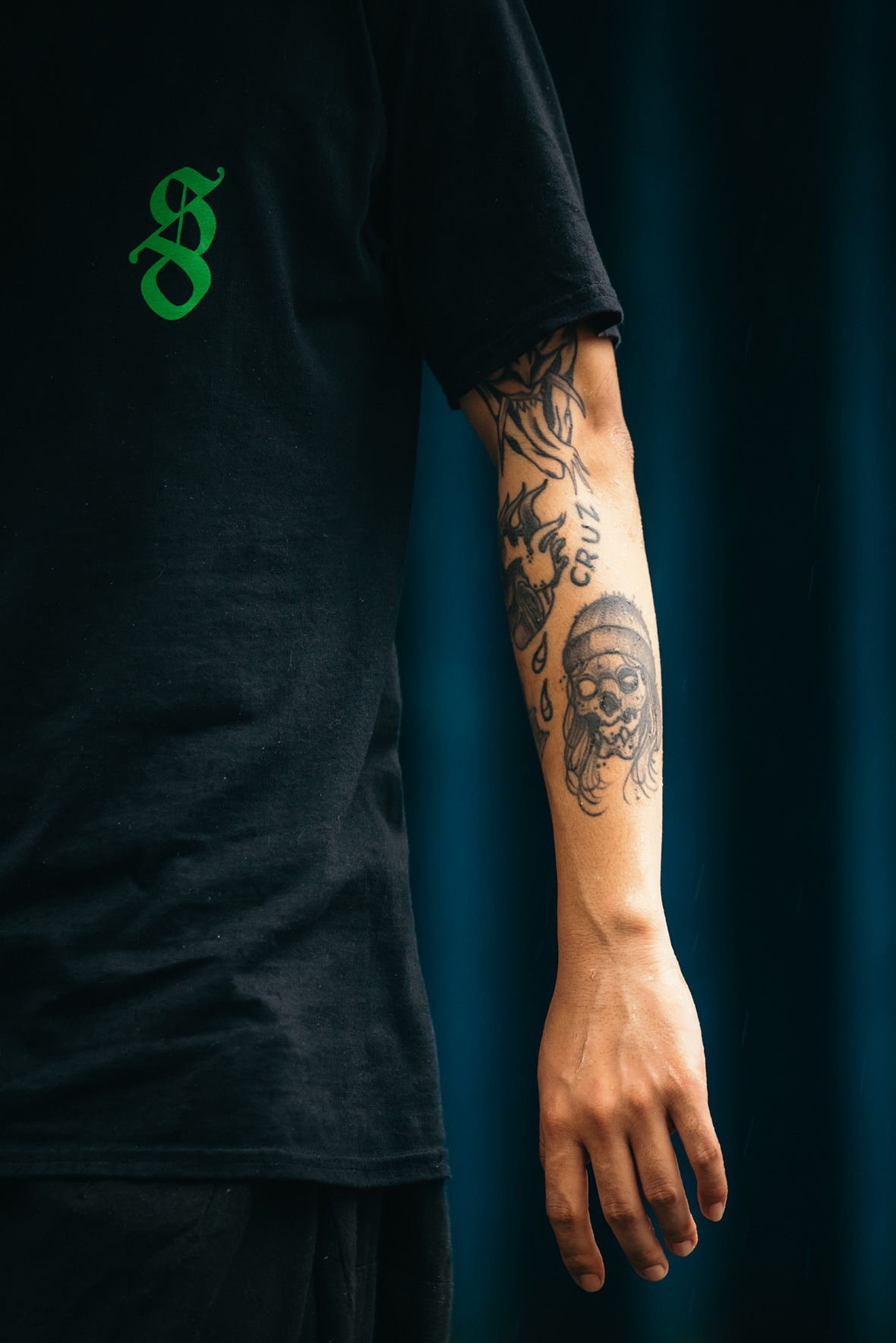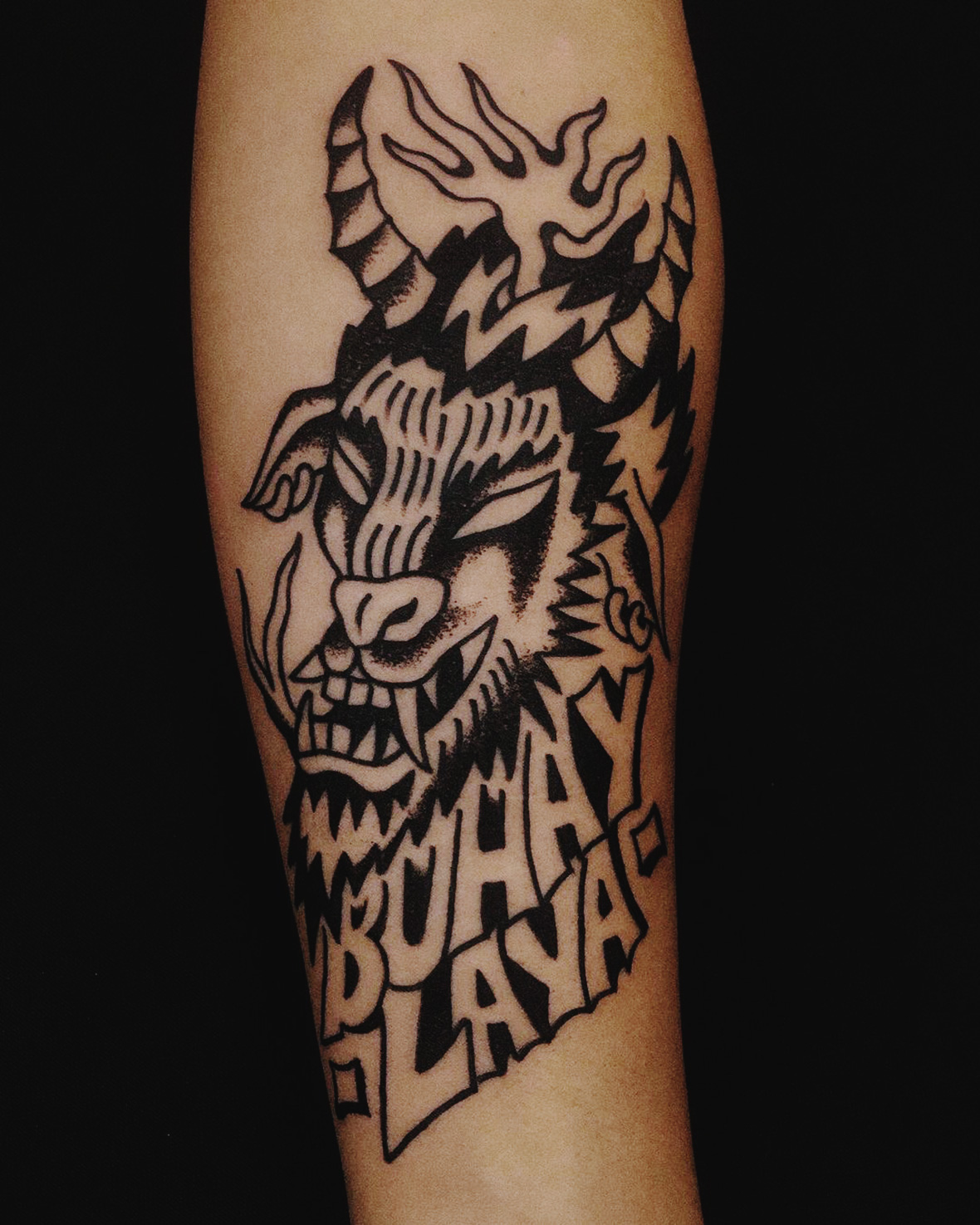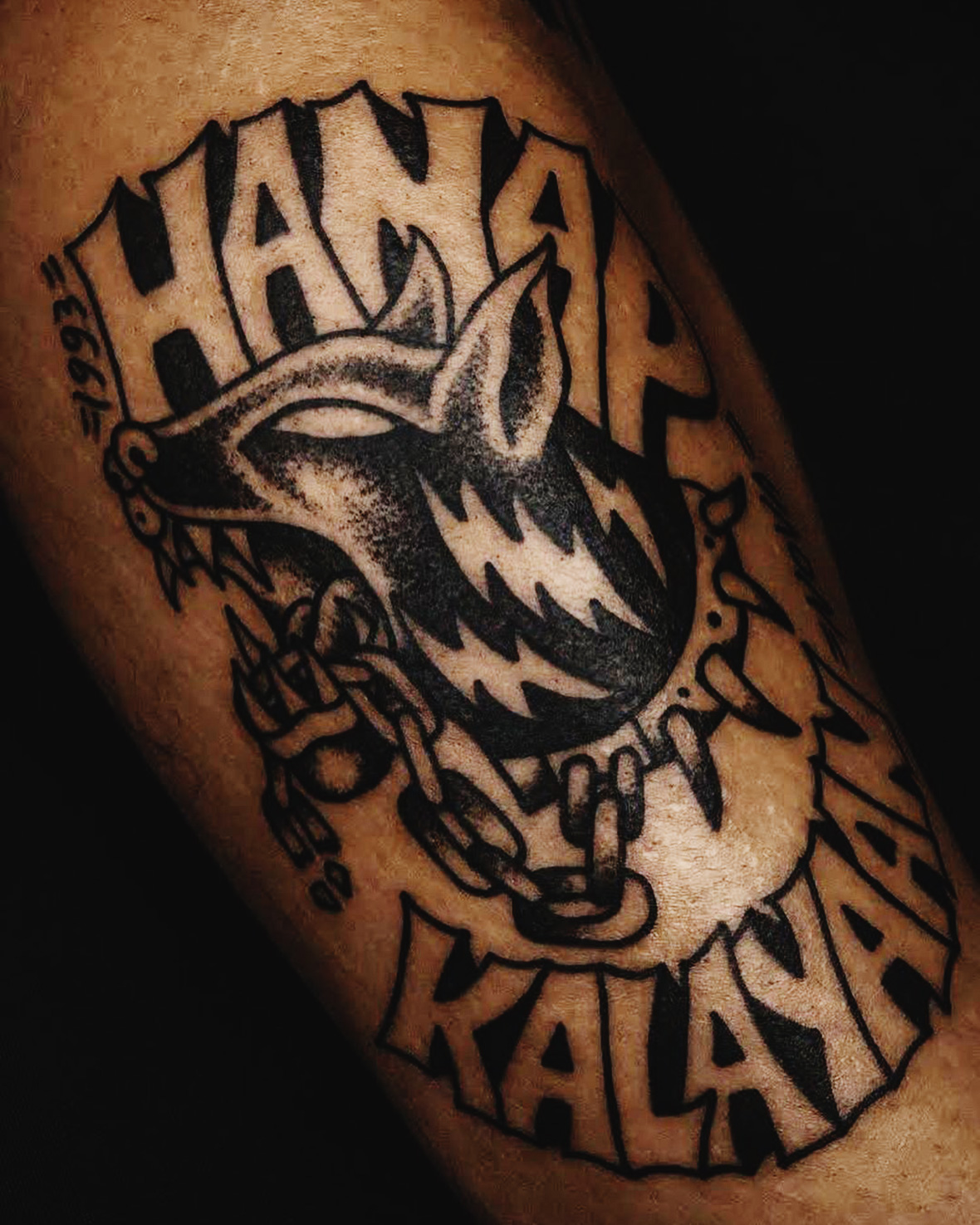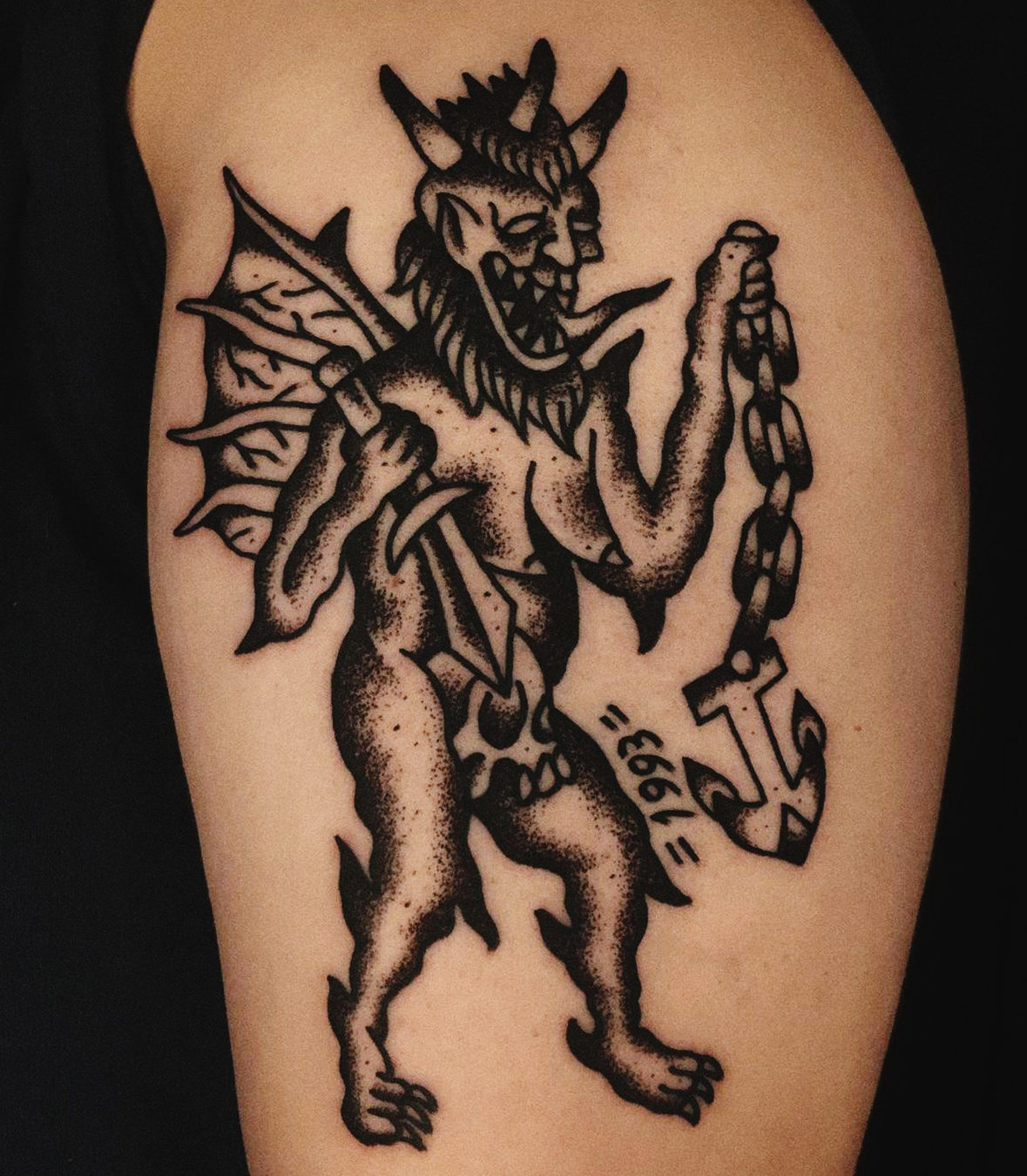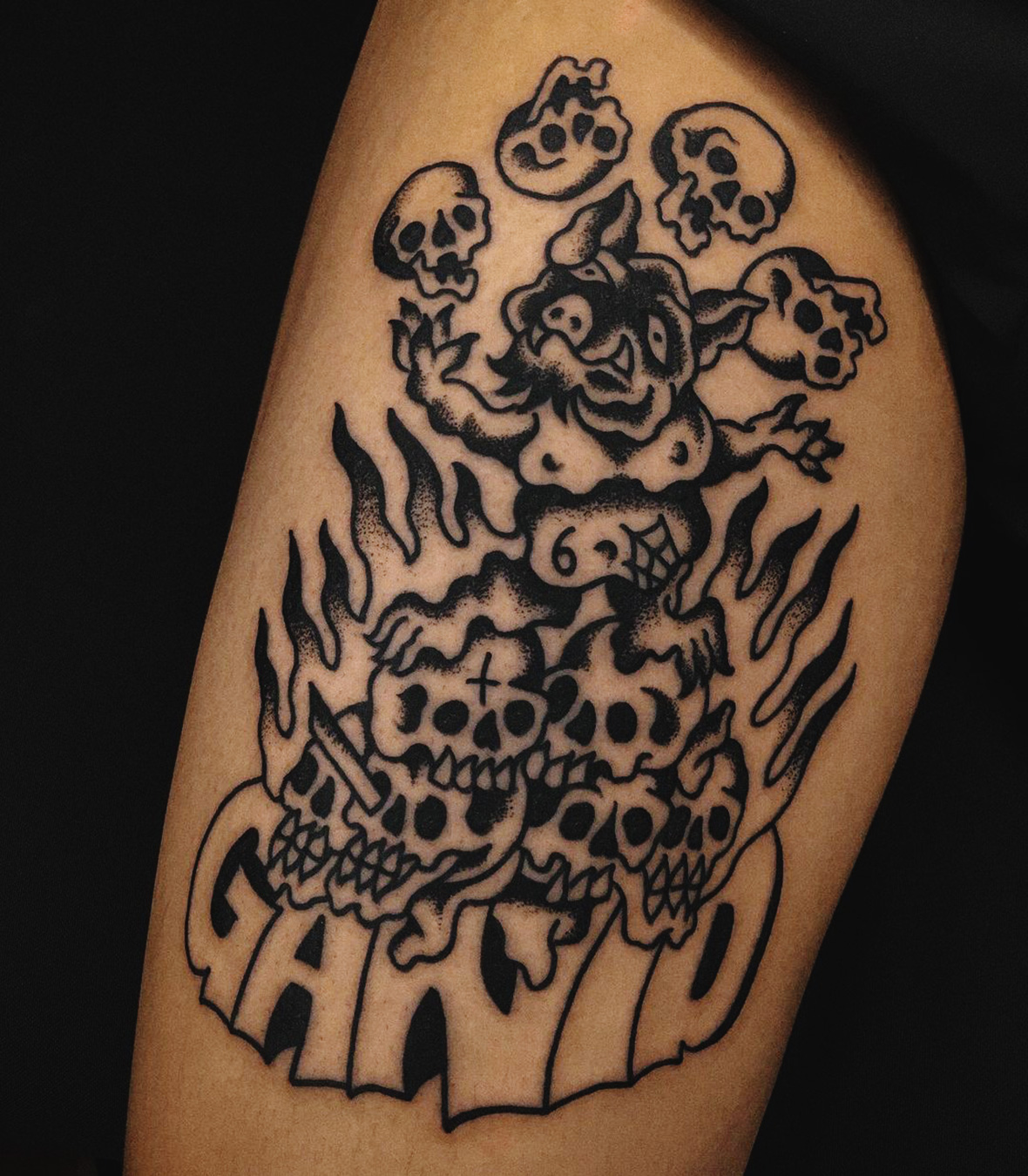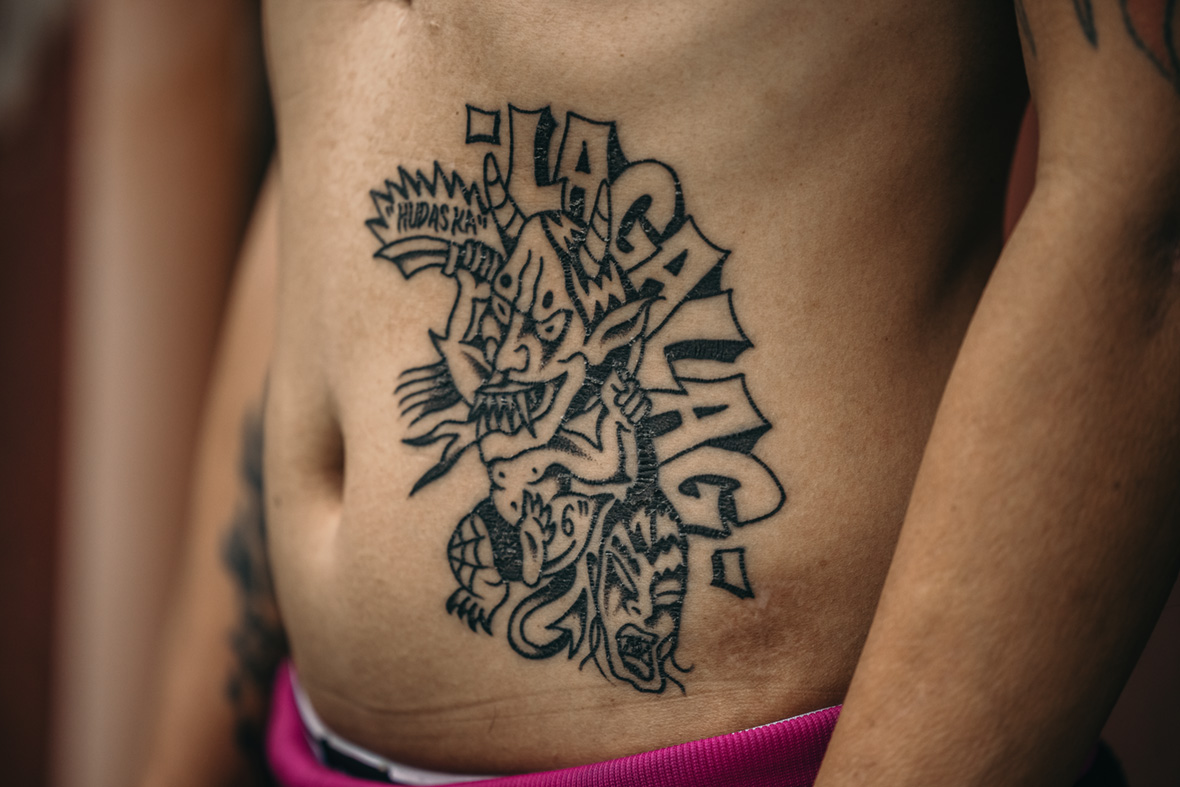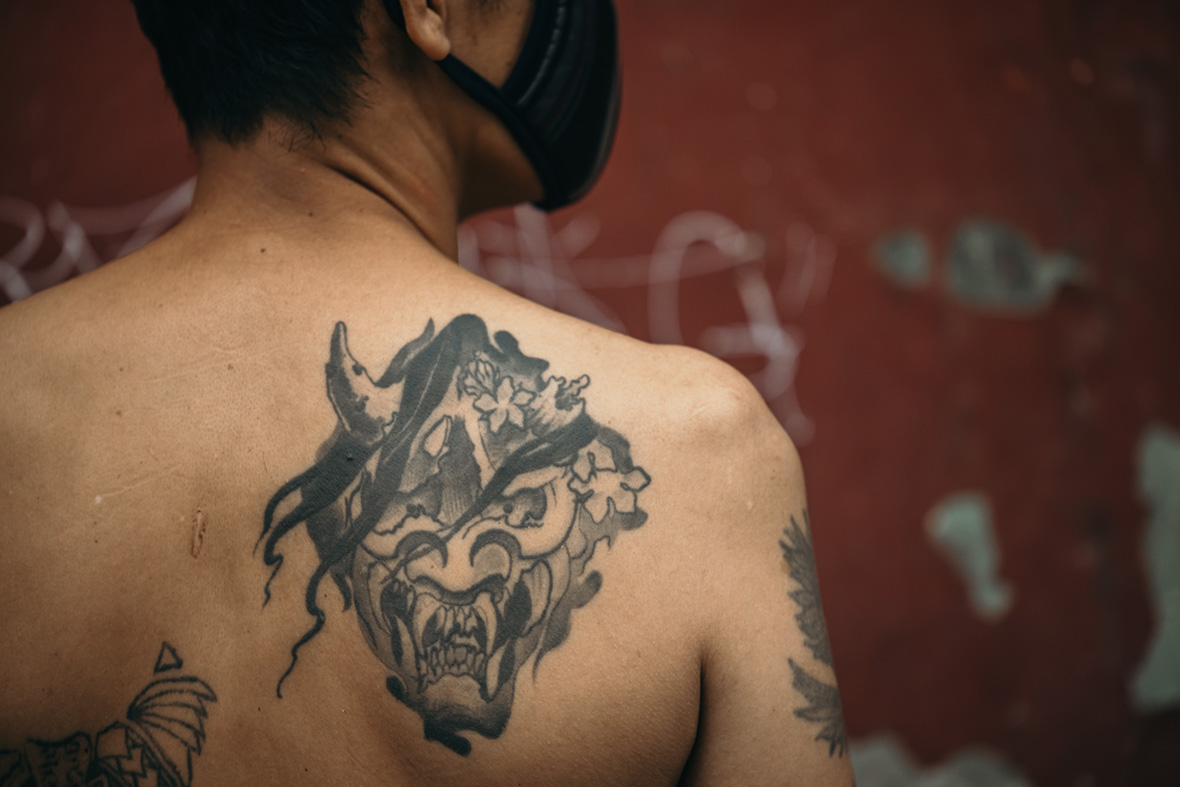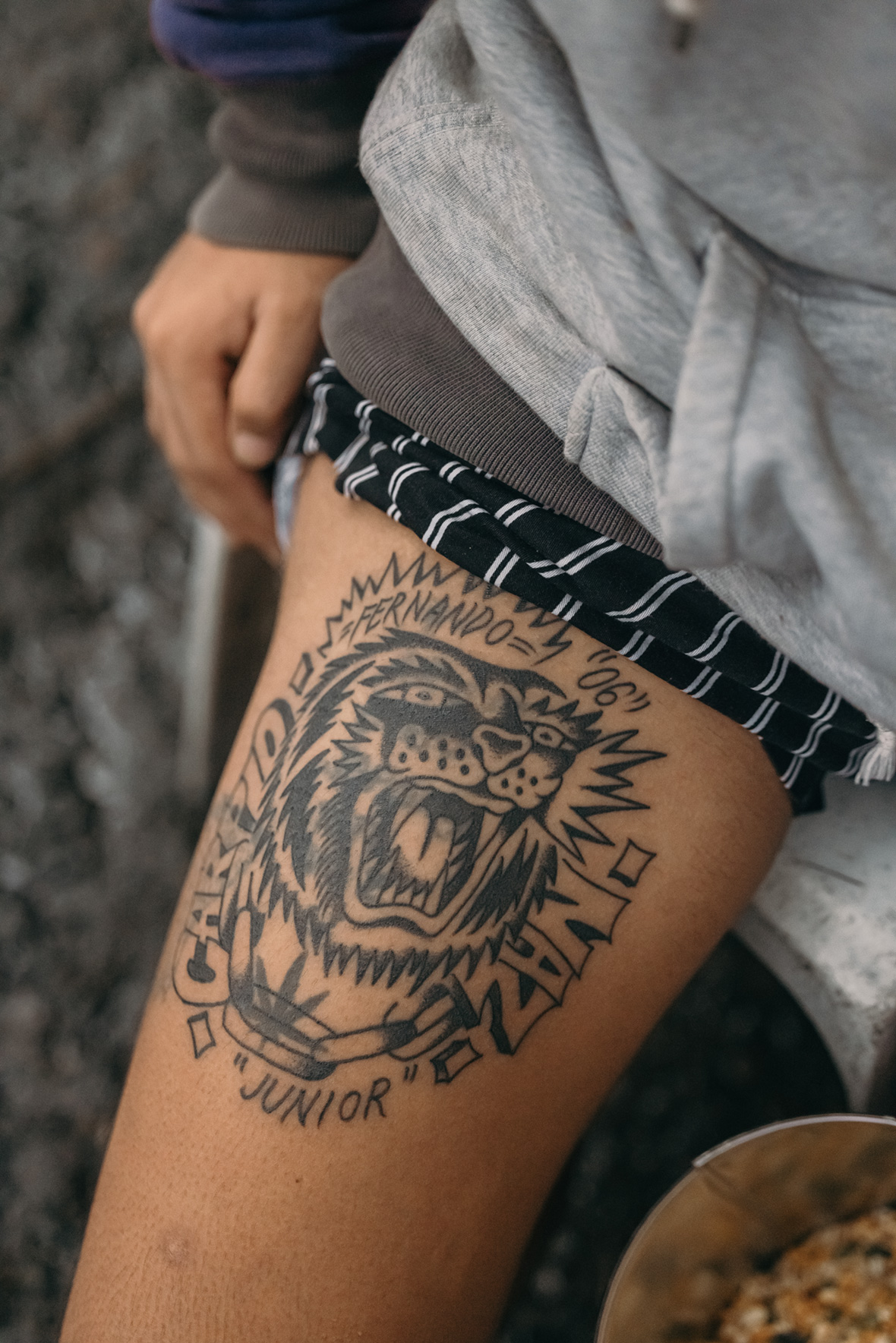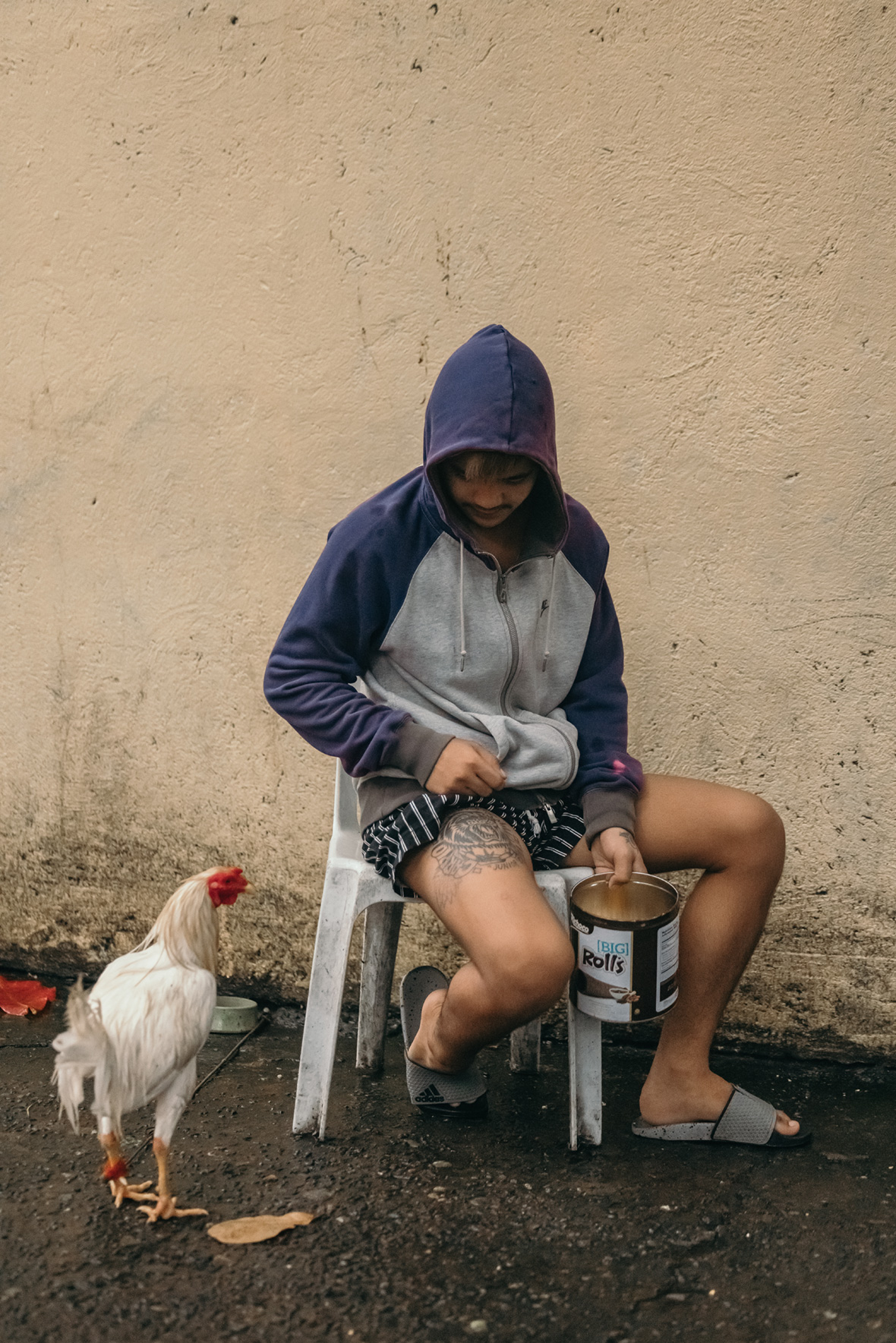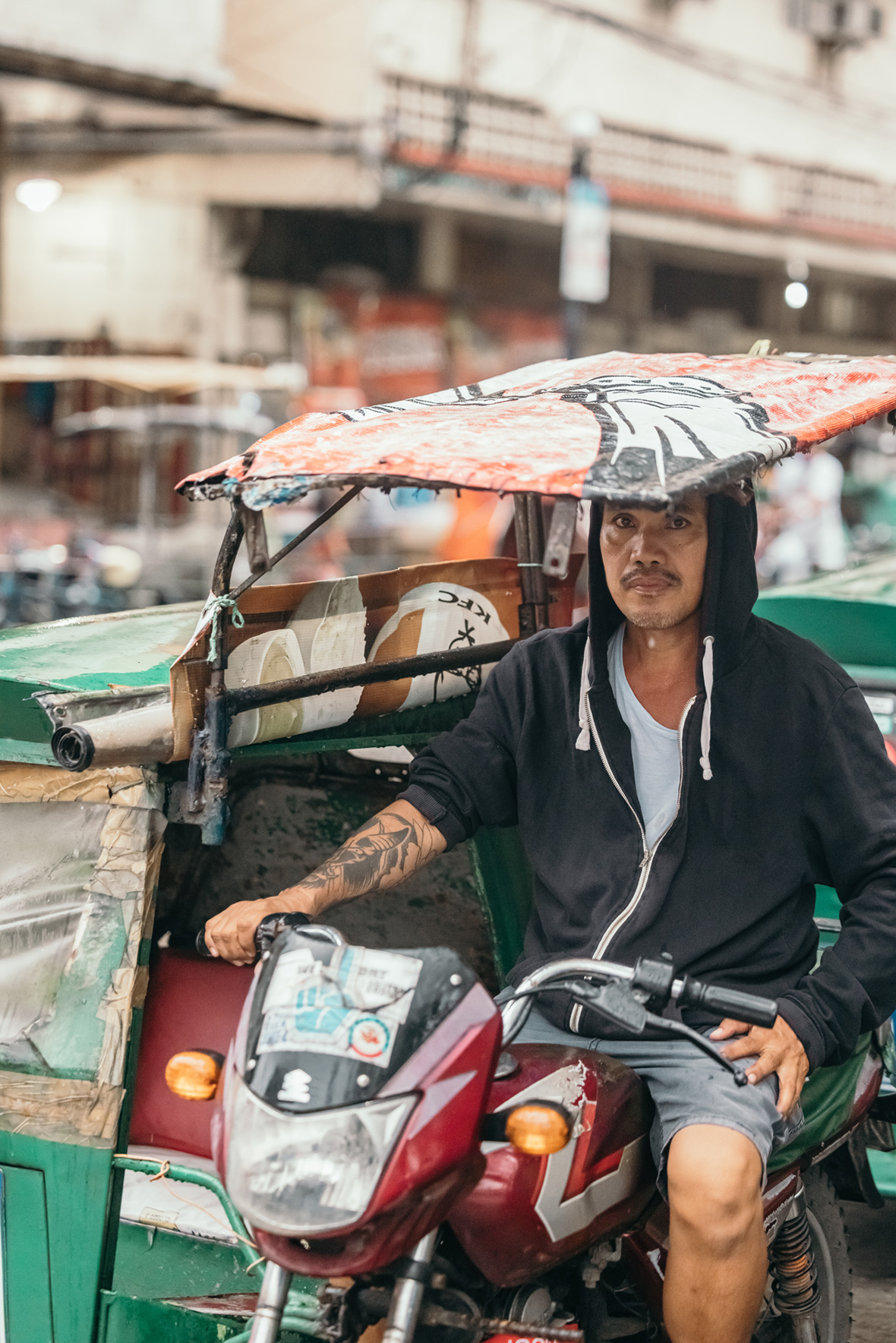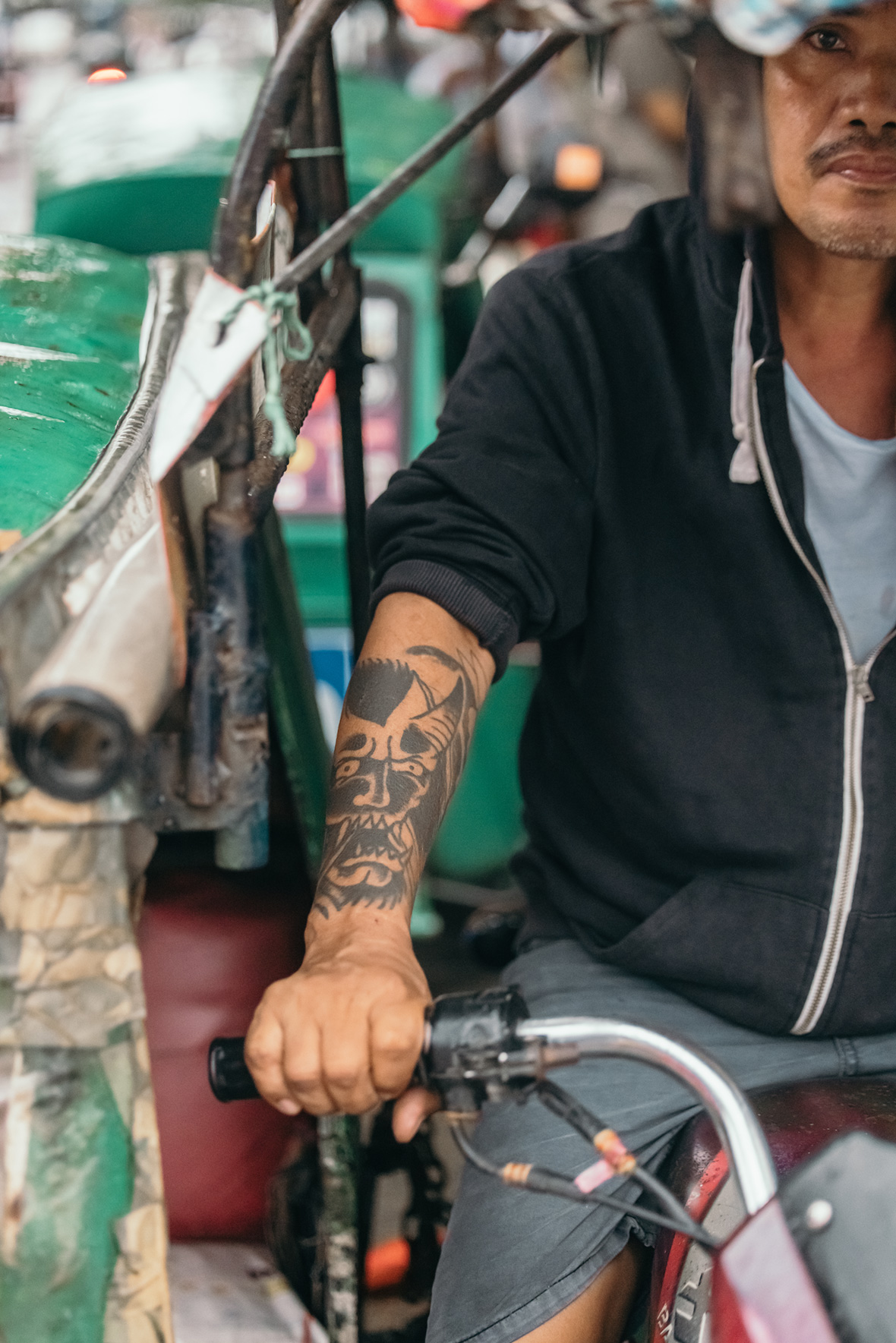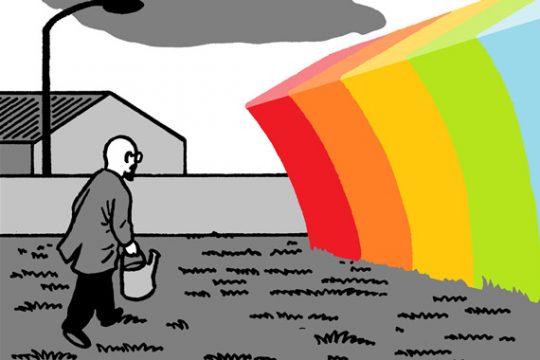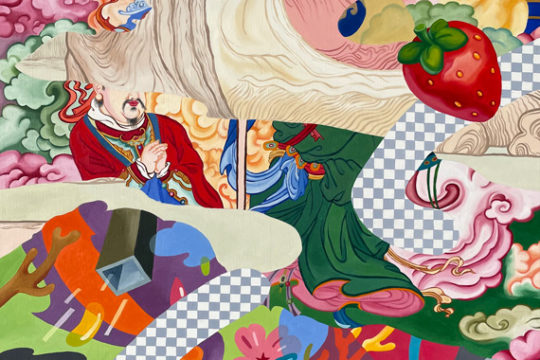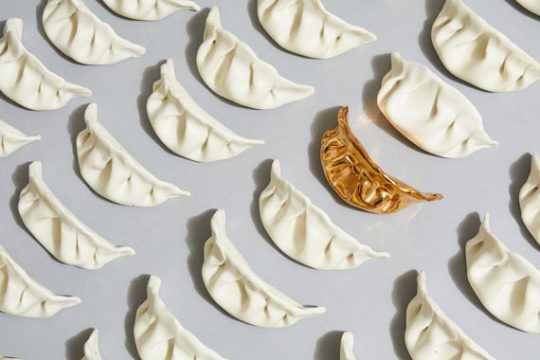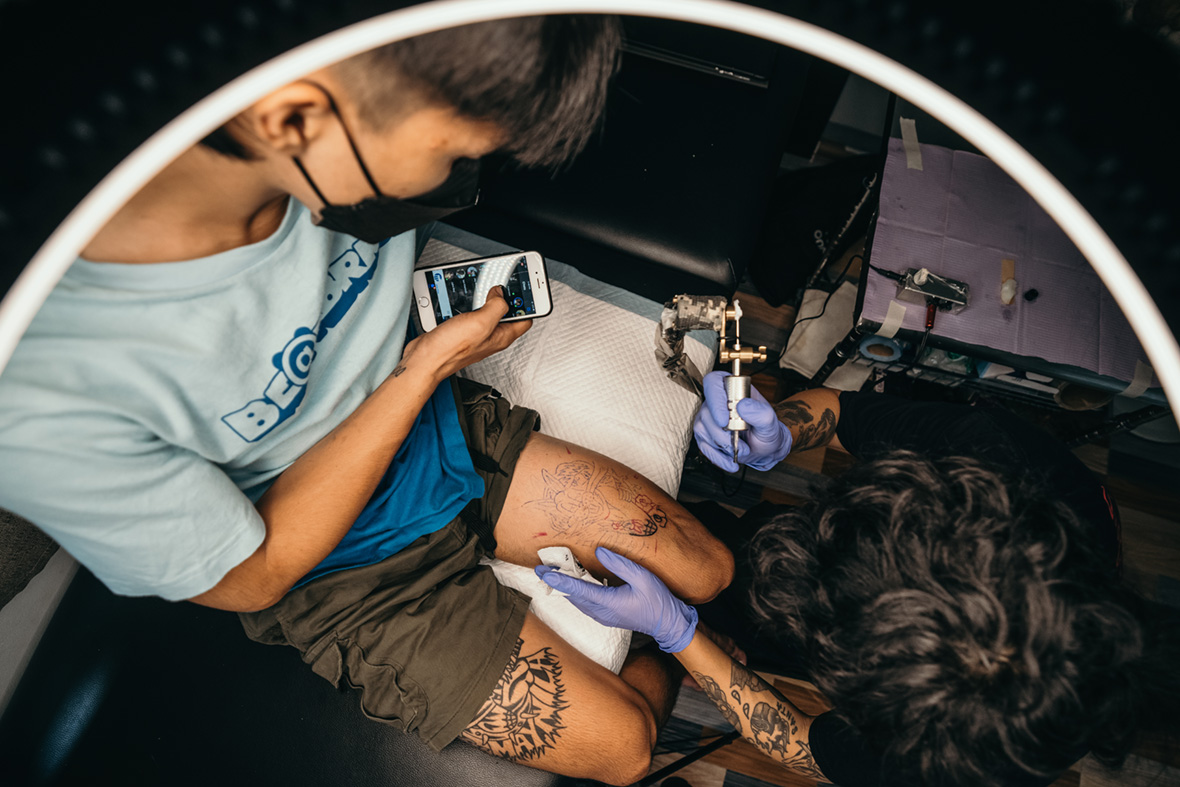
Tattoos have long held a tainted reputation, often being associated with the criminal world. In some cases, it’s true. Jail tattoos have always been a part of the culture. But once somebody has paid their debt to society, should they be judged further? If something has criminal roots, can it still be appreciated by the wider public? These are issues that Filipino tattooist Ian Marinda deals with, as his work is inspired directly by Filipino jail-style tattoos. They’re characterized by black linework, cartoon characters, chunky typefaces, and lettering with sign-painting influences—signature elements of tattoos from jails across the Philippines.
Marinda, who’s widely known by his childhood nickname Dabs, grew up in the shadow of the notorious Manila City Jail. Just blocks away, its spherical cells wrapped in a tight square by informal housing can be viewed plainly from the taller buildings in the neighborhood.
Marinda studied multimedia arts at university, and although he never finished, it was a local professor named Auggie Fontanilla who introduced him to the world of tattoos and encouraged him to pursue it full time.
人们对于纹身的评价向来毁誉参半,时常将其和违法犯罪挂钩。在某些情况下,这种联系不是空穴来风,例如影视作品中监狱场景中的角色身上往往都是虎头龙翼,而监狱纹身也的确作为纹身文化的一部分出现。但,既然罪犯已经为自己的违法行为付出了代价,他们还应在其他方面再被指摘吗?如果某事物的来历和法外世界有联系,那么它还能被普罗大众所接受吗?菲律宾纹身师 Ian Marinda 的创作灵感直接来源于菲律宾监狱纹身,上述问题是他在创作中长久以来关注的重点。监狱纹身由黑色线条绘就,内容多为卡通人物,拥有厚实的线条设计,受到纯手工招牌风格的很多影响 —— 而这些都是菲律宾监狱纹身的典型特征。
Ian 的艺名是 Dabs,来自童年时期的绰号。他小时候的成长环境距离臭名昭著的马尼拉城市监狱仅相隔几条街的距离,从高层住宅向监狱望去,拥挤逼仄的圆形牢房尽收眼底,周边杂乱地围着一系列非正规建筑。大学期间,Ian 攻读的专业是多媒体艺术。尽管他未能顺利毕业,但当地一位名叫 Auggie Fontanilla 的教授将他引入了纹身的世界,并鼓励他成为一名全职纹身师。
“I went on to apprentice for Dyani Lao, who pushes Philippine mythology in his tattoos. He inspired me to find a style for myself that was explicitly Filipino,” Marinda recalls. “Former prisoners rebuild their lives in our neighborhood, so I’ve always been surrounded by the tattoos. I was able to take photos and study their process. Ex-inmates tell me that the foundational elements come from Pinoy komiks and the fonts are from hand-painted billboards on old cinema posters. They say the style is called Guerero or Tatong Oblo.”
The jail’s nickname is Oblo, which is Manila slang for “loob,” itself Tagalog for “inside”.
Marinda explains that different gangs and prisons each use their own signs and symbols, but the style is basically the same across the country.
“随后我师从 Dyani Lao,学习纹身技艺。Dyani 是当地资深纹身艺术家,从二十多年前便开始纹身,他将菲律宾神话与纹身融为一体,并以这种方式促进神话的推广。在他的启发下,我希望找到属于自己的风格,也要带着浓厚的菲律宾特色”,Ian回忆道,“已经刑满释放的前犯人们在我家附近开始了崭新的生活。因而,我所在附近的许多人身上都有纹身,我也用镜头记录下这一切,观察他们重获新生的整个过程。他们曾告诉我监狱纹身的主要灵感来源是菲律宾漫画,而字体则沿袭了旧电影院海报手绘广告语的文字风格。人们把这种风格称作 Guerero 或 Tatong Oblo。当地人把监狱称作是 “Oblo”,取自马尼拉俚语单词 “loob”,在他加禄语中是“内在”的意思。
Ian 解释道各个帮派和监狱都有自己专用的标志和符号,但风格在全国范围内都大同小异。
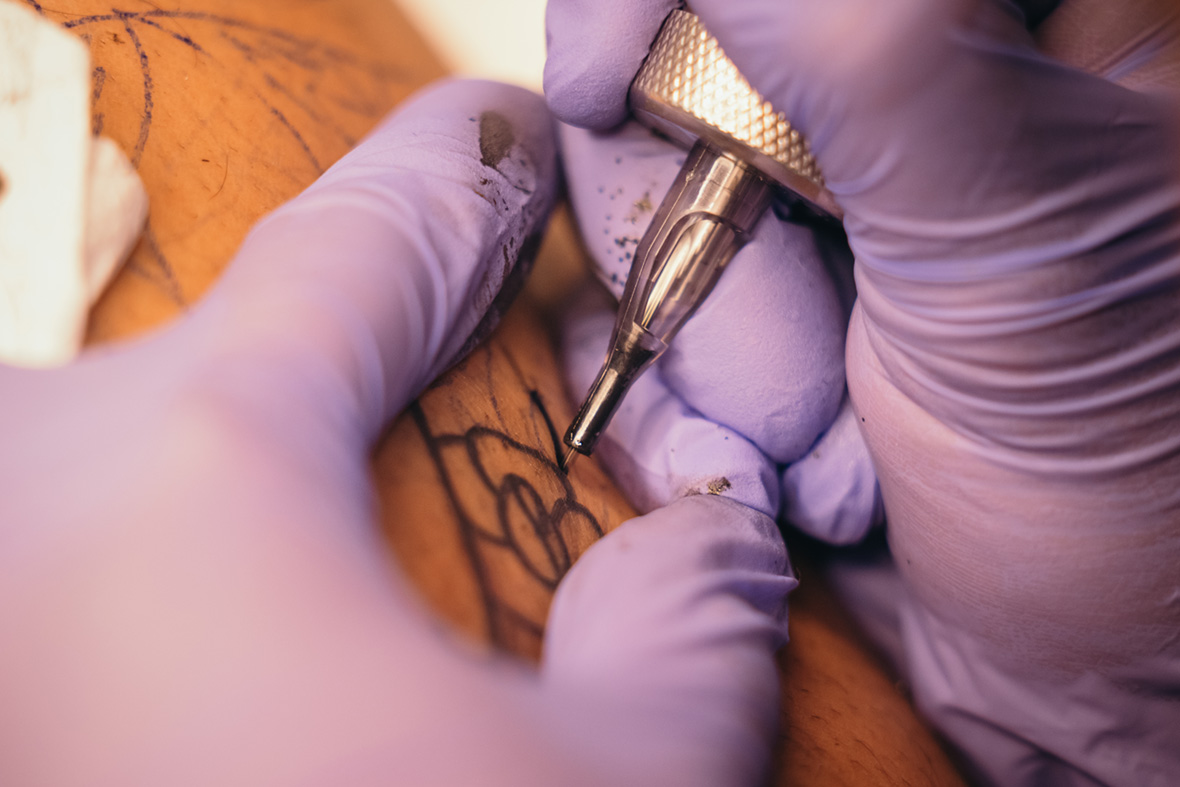
The 29 year old has never been incarcerated himself and his father is even a police officer, but Marinda has a deep concern for the struggles faced by those caught in the system. He hopes to give back to his community by bringing jailhouse-inspired tattoos to the greater public and reducing the stigma that surrounds them. He believes that by cultivating a newfound appreciation and understanding for the aesthetic, public opinion might be swayed. “Tattoos are discriminated against in general, but it’s up to us how we react and to educate our people,” he says. “People who get acquitted or have already served their prison time just want a new life but have to deal with discrimination, sometimes because of their tattoos. It’s not only a challenge for them to get new jobs, but they’re pointed at like monsters to scare little children, and I think that’s unfair.”
二十九岁的纹身师 Ian 从未入过监狱,他的父亲还是一名警察。然而,他却时常关心起深陷囹圄的囚犯们。他希望将监狱风格的纹身进行推广,由此回馈社区。Ian 相信通过培养大众对于监狱纹身的接受能力,人们对于改过自新的罪犯的态度会发生扭转。“通常,有纹身的人会被区别对待。在如何应对这一问题以及如何通过引导来改变现状上,纹身师拥有主动权”,他表示,“那些被无罪释放或已刑满释放的人们只想重获新生。然而,他们不得不与纹身等因素带来的歧视目光相抗争。对他们来说,想要找到工作已非易事,人们为了吓唬小孩子还会对他们指指点点评头论足,就好像他们是怪物一样。我认为这并不公平。”
Since the style is heavily inspired by gang references, his tattoos can lead to misunderstandings sometimes. One artist from a different part of the city who got a tattoo from Marinda says he was challenged by someone accusing him of being in a particular gang because his tattoo resembled their set. He said he had to take out his phone and show the accuser pictures from his photo album to prove he had no gang affiliations.
帮派中常见的视觉元素是 Ian 纹身灵感的重要来源,这倒是让他的作品曾造成误会。住在城中另一地区的某位艺术家是他的客户,他表示自己曾被人怀疑是某帮派成员,原因竟是他的纹身与某帮派专用纹身相似。无奈之下,艺术家只好掏出手机向对方展示自己相册里的一些生活照以证清白。
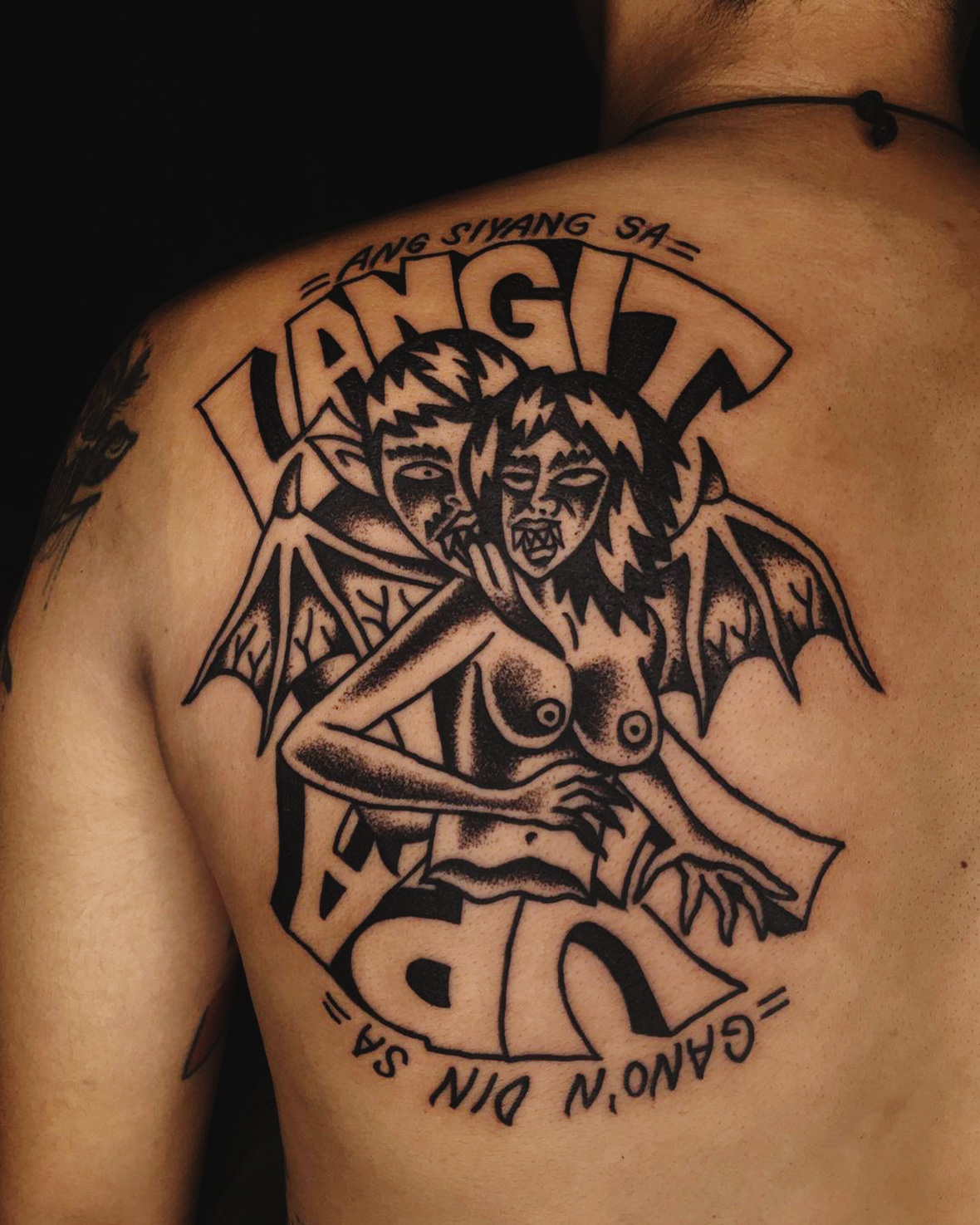
One way Marinda directly gives back to his neighborhood is by offering cover-up tattoos. Inexperienced street kids in the area often tattoo themselves at a young age using amateur tools with bad results. So he offers to give them a fresh cover-up piece for only the cost of materials like gloves and paper towels. He also offers cover-ups for their gang tattoos as well.
作为回馈社区的方式之一,Ian 经常为人们将不想要的纹身进行再次加工或填盖,这种方法被称之为 Cover-Up。经验不足的街头小子,常在年少时用简陋工具为自己纹身,却往往带来不尽如人意的后果。因此,Ian 会为他们在原有纹身的基础上绘制遮盖纹身,其收费低廉,仅仅相当于手套和卫生纸等材料的成本。此外,新纹身还可用以覆盖之前的帮派图案。
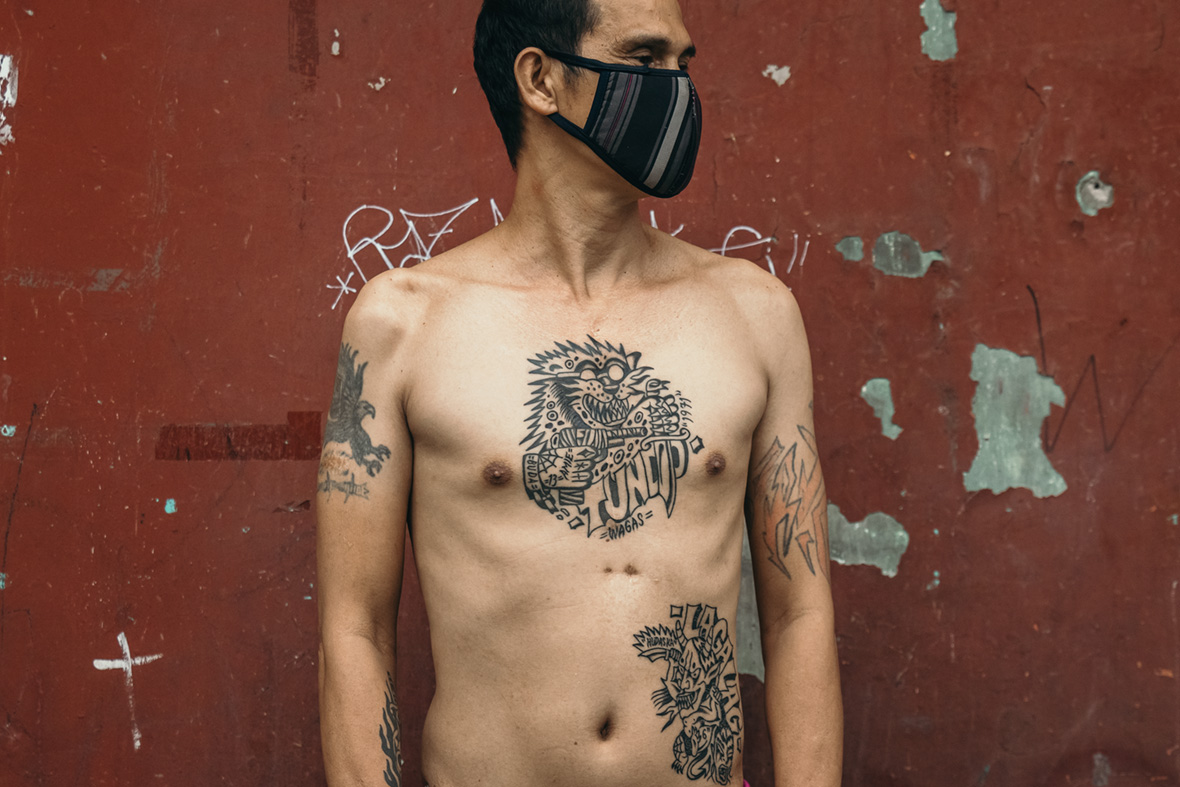
Many within the community support Miranda’s work. Taking a walk down the street from the live-work studio that he moved into recently, people are happy to lift their shirts and roll up their sleeves to show off Miranda’s work; many inked with multiple pieces. At the motor pedicab station where his cousin works, everyone has gotten work done by Miranda, and they brandish them like badges of honor.
周围许多人都对 Ian 的作品表示支持。他新迁入的工作室集工作、生活于一体,那里门口总是人来人往,大伙儿沿街而行,欣然撩起自己的上衣或袖子向大家展示他们的纹身;不少人身上多个纹身相映成趣 —— 这些都是 Ian 的杰作。就连 Ian 在三蹦子车站工作的亲戚身上也纹着他的作品。他们自豪地摆动身躯,仿佛纹身是一枚枚荣誉勋章。
“Prison tattoos didn’t come from a void, they’re the creative expression of people deprived of freedom,” Marinda says, admiring them while acknowledging their troubled roots. “I’m not trying to glorify crime, but our justice system is classist. Only the rich can afford justice here.” He hopes that his work will draw attention to the issues surrounding the carceral system.
Conditions inside Filipino prisons are brutal. The Philippines has the second most overcrowded penal system in the world, which is 450 percent overcapacity, housing more than 200,000 people in space built for only 40,000. Seventy-five percent of the detainees haven’t even been convicted and are just awaiting trial, many for years. At the country’s main detention center, one in five inmates die annually. “It’s inhumane and needs to be reformed,” Marinda says. “I want to help change the narrative about the people who’ve been trapped within this system. The bigger criminals are still walking free.”
Ian 认为,“监狱纹身的出现是有来由的,它们是被剥夺自由的人们富有创造性的表达。”他佩服他们的创造和才华;与此同时却也承认他们错综复杂的过去。他表示:“我不是在为犯罪行为洗白,我想说的,是我国监狱系统长久以来滋生的歧视现象。只有富人才能享有真正意义上的公义。”因此,Ian 希望借自己的作品引发公众对监狱系统一系列问题的关注。
在菲律宾,牢房的生活条件十分艰苦,监狱“超载”率居全球第二:一座可容纳四万人的监狱,却关押了二十多万犯人,“超载”率高达 450%。其中 75% 的人还未被定罪,正在等待庭审,有些人一等就是数年。在菲律宾的主要拘留中心,那里每年都有五分之一的在押犯人死亡。Ian 说:“这一切惨无人道,改革势在必行。希望能改变社会对他们的舆论,让人们意识到真正罪不可赦的罪犯可能至今还逍遥法外。”
Like our stories? Follow us on Facebook and Instagram.
Instagram: @daaaaaaaabs
Contributor: Mike Steyels
Photographer: Jilson Tiu
Chinese Translation: Alice Zhang
Additional Images Courtesy of Ian Marinda

